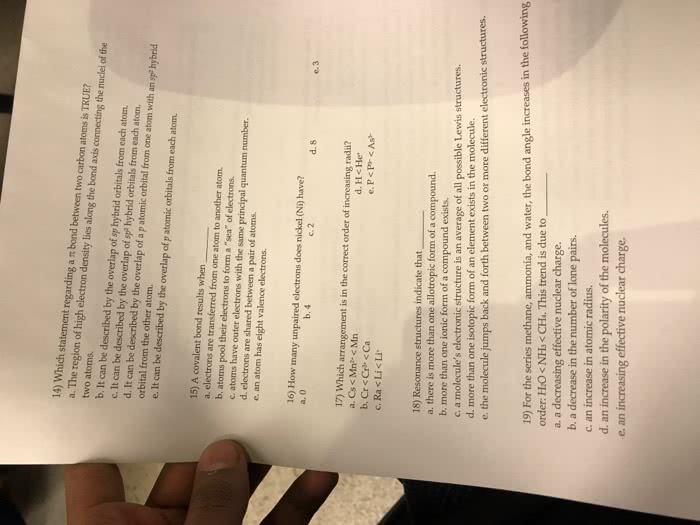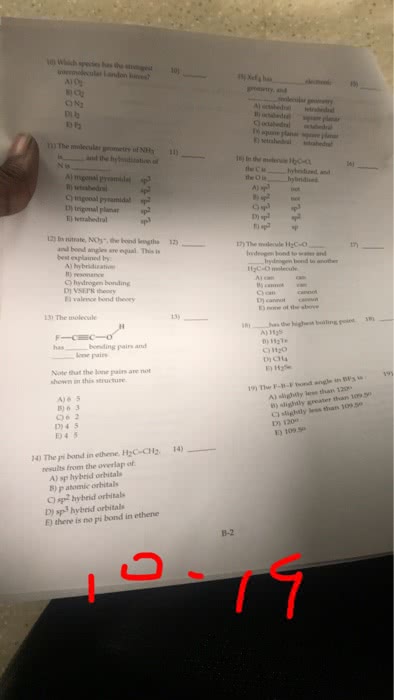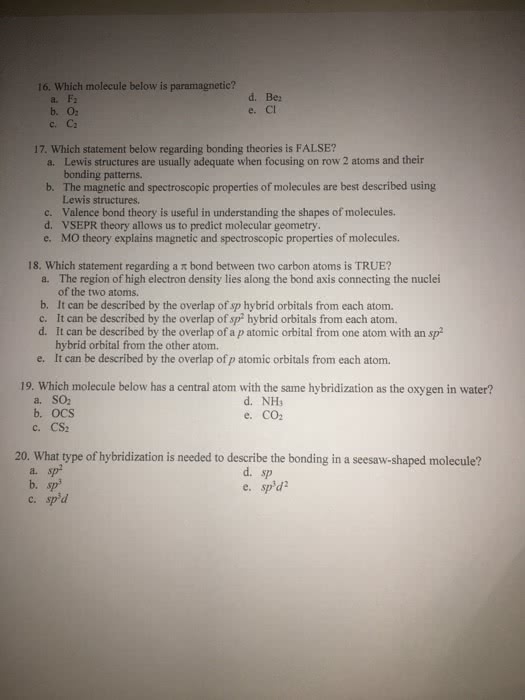CHEM 1031 Lecture 35: 12/7/2016 Valence Bond Theory; Hybridization
Document Summary
The number of hybrid orbitals in a set = the number of atomic orbital to create that set. The orbitals in a hybrid set have the same shape and energy. Electron-pair geometry (vsepr) determines the type of hybrid orbitals formed: when hybrid orbitals overlap, it makes sigma bond. S orbital, three p orbitals and one d orbitals: sp3d2 hybrid orbitals: formed from 6 valence shells orbitals in an octahedral pattern. S orbital, three p orbitals, two d orbitals. Pick the geometry that matches: # of regions, arrangement,hybridization, angle, 2, linear, sp, 180, 3, trigonal planar,sp2,120, 4, tetrahedral, sp3, 109. 5, 5, trigonal bipyramidal, sp3d, 120* and 90, 6, octahedral, sp3d2, 90* The hybridization theory works well when the central atom is small. As it gets larger, the electrons are further apart and don"t repel as much. Tend to defy vsepr: hybridization is used to explain structures that behave strangely. C2h2: the carbons form sigma bonds with the hydrogen.




